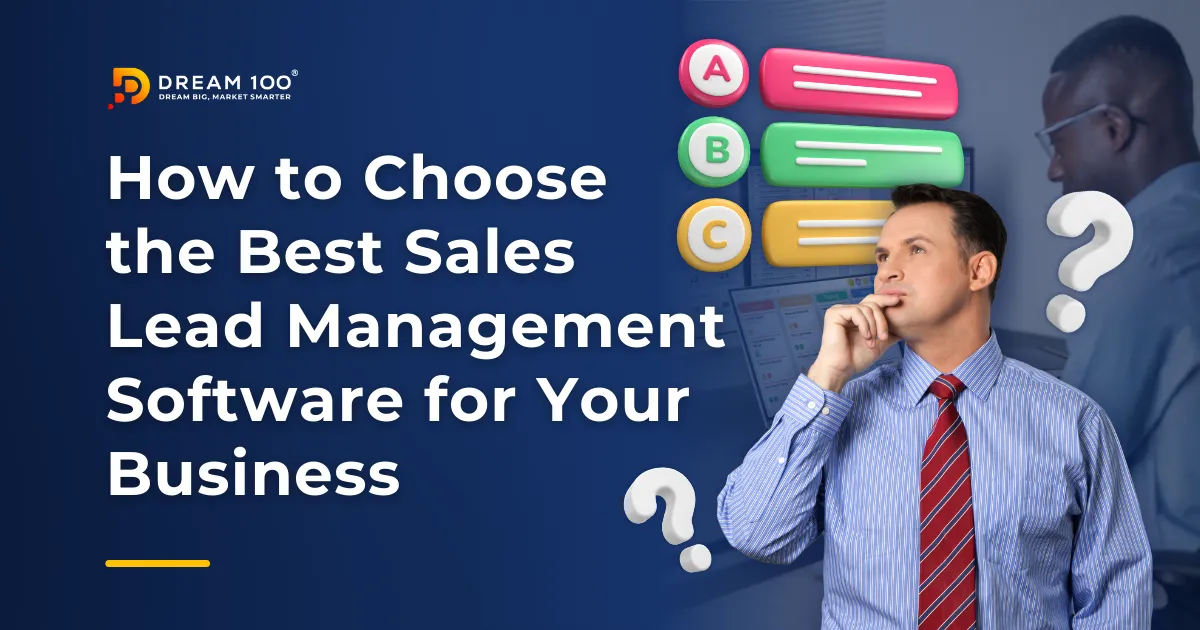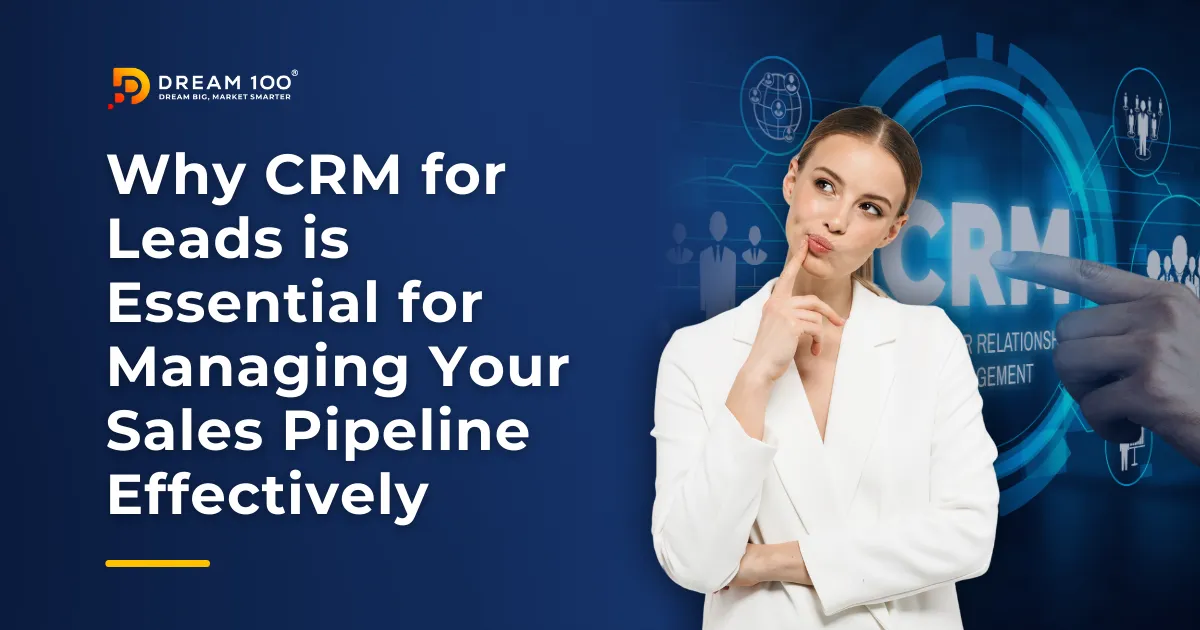Are you maximizing your lead qualification process, or does it feel like you’re gambling every time you chase a new lead? You gather contacts, spark initial interest, and hope this one might just be the breakthrough your business has been searching for. But here’s a reality check: 80% of leads never convert into successful sales.
It’s a tough pill to swallow, especially when you think every prospect could be “the one.” This high failure rate isn’t just a fluke—it’s a wake-up call that not all leads are worth the same investment. The secret isn’t in collecting more names in your list of leads; it’s in mastering the art of qualifying leads.
Ready to turn your hit-or-miss lead efforts into surefire hits? You’re in the right place. This blog will tackle the lead qualification process, teaching you how to sift through the noise and spot the leads that are not just nibbles but potential big catches.

Understanding the Lead Qualification Process
Think of the lead qualification process as the ultimate gatekeeper of your business’ resources. It’s not merely about filtering out who might buy; it’s about pinpointing who should buy. This sales qualification process acts as a savvy business filter, separating the ‘maybes’ from the ‘definitelys’ and directing your sales team’s marketing efforts toward the most promising prospects.
So, how does this magic filter work? It starts with defining what makes a lead ‘qualified’ within the context of your specific business needs. This might mean identifying the leads with the right budget, authority, and genuine need for your offerings or perhaps those within your target market and geographical reach.
Yet, it’s not just about checking off boxes. Lead qualification is also an art. It’s about reading between the lines, picking up on subtle signals, and applying your business intuition to assess a lead’s genuine interest and compatibility. Are they just browsing, or are they ready to take the plunge? This routine assessment can save you a lot of time and resources.
By mastering this process, you ensure that you’re not just chasing shadows but cultivating real opportunities that can bloom into fruitful business relationships.

How to Set up a Sales Qualification Process for Your Business?
Feeling swamped with cold leads that don’t convert? You’re not alone —67% of B2B sales are lost because leads aren’t properly qualified.
The solution?
Read on, as we’ll walk you through the steps of building a streamlined sales qualification process to boost your sales funnel’s efficiency.
Step 1: Define Your Ideal Customer Profile (ICP)
Who’s your perfect customer? Kick things off by painting a detailed picture of your ideal customer. Think demographics, industry, company size, and the specific challenges your product solves. Knowing who your ideal customer is sets the stage, ensuring your team doesn’t waste time on leads that aren’t the right fit.
Step 2: Develop Qualification Criteria
Not all leads are created equal. Before you jump in, define who your ideal customer is. Think budget, decision-making power, specific needs, and urgency. This way, you can focus on building strong relationships with the leads who are most likely to convert.
Step 3: Train Your Team
Equip your sales team with the knowledge and tools they need to be sales superstars. Leveling up your sales force helps them identify high-potential leads and understand their needs. Interactive role-playing will boost their confidence and sharpen their skills, making them unstoppable.
Step 4: Implement a Lead Scoring System
Automate the grunt work with a lead scoring system that ranks prospects based on how well they match your criteria. These automation tools let your team focus on the most promising leads, ensuring they’re talking to potential buyers, not tire-kickers!
Step 5: Use CRM Software
Supercharge your business with a killer Customer Relationship Management (CRM) system which can track lead interactions, automate scoring, and ensure no lead gets lost in the shuffle. Choose a CRM that aligns perfectly with your sales process, and you’ll be amazed at how much more efficient and effective your team becomes.
Step 6: Monitor Your Process
Lead qualification is not a set-it-and-forget-it process. What worked yesterday might not work tomorrow. Keep tabs on how well your current practices are working and tweak them based on real-world outcomes and feedback. Stay flexible to keep your process sharp and effective.
Step 7: Align Sales and Marketing
For a winning game plan, get your sales and marketing teams on the same page. When they share a vision of a perfect lead, both teams thrive, and they crush those sales goals together. Regular check-ins keep everyone in sync and primed for success.

Key Benchmarks for Qualifying Sales Leads
You’ve set up a system for qualifying sales leads – great! But how can you tell if it’s working the way it should? The answer lies in the key metrics to assess the effectiveness of your sales lead qualification.
Lead Response Time
How quickly are you connecting with new leads? In lead qualification, acting fast is crucial. Aim to reach out within the first hour. If you wait too long, those leads might lose interest. The quicker your response, the higher your chances of converting them!
Lead Conversion Rate
What percentage of your leads turn into genuine opportunities? This rate is like the pulse of your qualification efforts. Targeting a 20-30% conversion rate is pretty solid across the board. If you’re hitting these numbers, your targeting is spot-on.
Sales Follow-up Success Rate
It’s not just about making contact; it’s about making it impactful. A solid follow-up success rate typically falls between 25% and 30%. If you’re reaching these numbers, you’re keeping potential clients engaged and wanting more. This means your follow-up strategy is effective and well-planned.
Length of Sales Cycle
How swiftly are you turning those qualified leads into paying customers? This benchmark measures your sales cycle’s efficiency. A shorter cycle indicates your team is not just fast but also efficient. Keeping a close eye on the average duration helps you identify and smooth out any snags in your process.
Rate of Lead Leakage
How many leads slip through the cracks before they’re even qualified? A low leakage rate under 10% means you’re keeping more potential wins in play. It’s about tightening up those initial stages and making sure no good lead goes unnoticed.
Cost Per Lead
How much does each lead cost you? It’s important to find a sweet spot where the cost of getting leads balances with their potential value. Keeping an eye on your cost per lead and setting benchmarks can help you ensure you’re getting the most out of your budget and not just saving money, but spending it strategically.
Customer Lifetime Value to Customer Acquisition Cost Ratio
Think about it this way: how much value do you get from a customer over time compared to what it costs to bring them on board? Ideally, you want to get at least 3 times more value out of a customer than it costs to acquire them. This ratio, called LTV to CAC, is a key indicator of your business’s financial health. If the numbers aren’t on your side, it might be time to refine your business strategy to get more return on your investment.

Key Metrics for Identifying Promising Leads in Sales Lead Qualification
Is your sales lead qualification a guessing game?
We can help you shed light on your sales strategy. With the right metrics, you can identify high-potential leads with confidence and ditch the guesswork.
Lead Score
Lead scoring acts as your initial filter against unqualified leads. It assigns points based on how closely a lead matches your ideal customer profile. This can include demographics, website behavior, and engagement with your email campaigns. With a quick glance at the score, you can prioritize “hot leads” who show strong interest and are more likely to convert. The higher the score, the hotter the lead – it’s that easy!
Engagement Level
Dive deeper than just contact information – track engagement to understand true interest. This means looking at how often and how deeply a lead interacts with your content. Are they opening emails and visiting your website? High engagement indicates strong interest, making these leads prime candidates for further nurturing and prioritization.
BANT Criteria
Classic but effective, BANT helps you sift through the noise:
- Budget: Is the cash there?
- Purchasing Authority: Can they call the shots?
- Need: Do they genuinely need what you’re offering?
- Timing: Are they ready to act soon?
Tick these boxes, and you’ve got yourself a lead worth pursuing.
Past Purchase Decisions
Don’t underestimate the power of past behavior! Analyzing a lead’s purchase history can be a great way to predict future buying decisions. Customers who have made similar purchasing decisions are often more likely to convert again. Think of their purchase history as a valuable clue – use it to identify leads who are pre-disposed to saying “yes” to your offerings.
Content Interaction
Are leads downloading your guides, attending webinars, or consuming your long-form content? High interaction with these valuable resources indicates a qualified lead who’s actively researching and likely nearing a purchase decision. They’re investing time in learning about your solutions, suggesting they’re seriously considering your offerings.
Lead Source
Tracking your lead source can reveal which channels deliver the most qualified prospects. Is it LinkedIn, industry events, or a specific partner referral program? Identifying these “goldmine” channels allows you to optimize your marketing efforts and focus resources where they’ll yield the highest return on investment.
Conversion Path Length
How quickly do leads go from browsing to “let’s talk business”? A shorter conversion path typically indicates a lead with a strong desire to buy. These fast-moving leads are highly valuable, so ensure your qualification process is streamlined and engaging to keep them interested and moving forward.
Conclusion:
Mastering the lead qualification process is the key to unlocking explosive business growth. This guide served as your comprehensive toolkit, equipping you with a step-by-step approach to building your own qualification system. We explored key benchmarks and metrics to ensure you’re attracting the right leads, not just any leads.
Fine-tuning this process can feel intricate, but Dream 100® is here to help. Our lead generating and nurturing service specializes in crafting customized qualification strategies. We go beyond just capturing qualified leads; we nurture them into loyal customers who fuel your business growth.
Ready to experience the power of a qualified pipeline? Reach out to us today and let’s transform leads into lasting success together!




